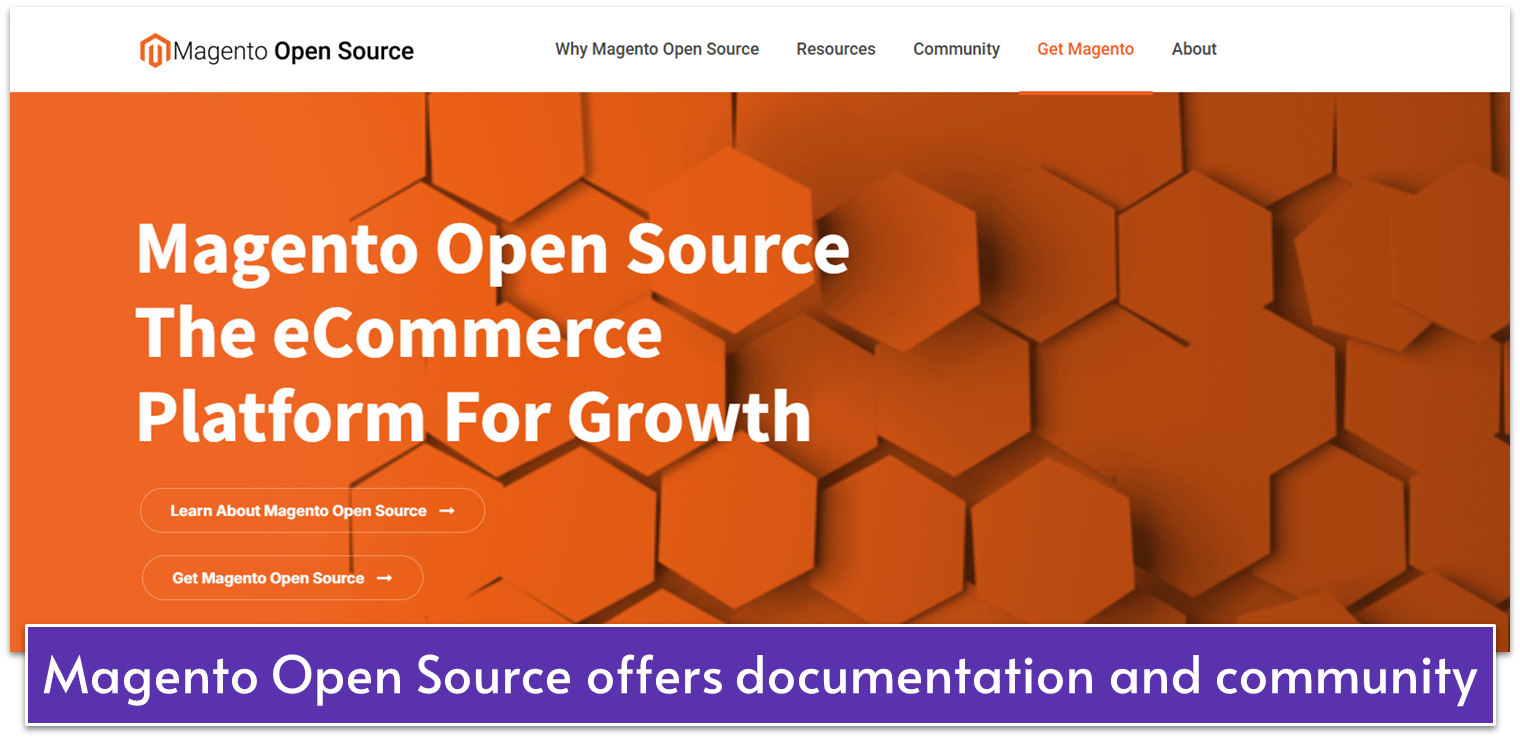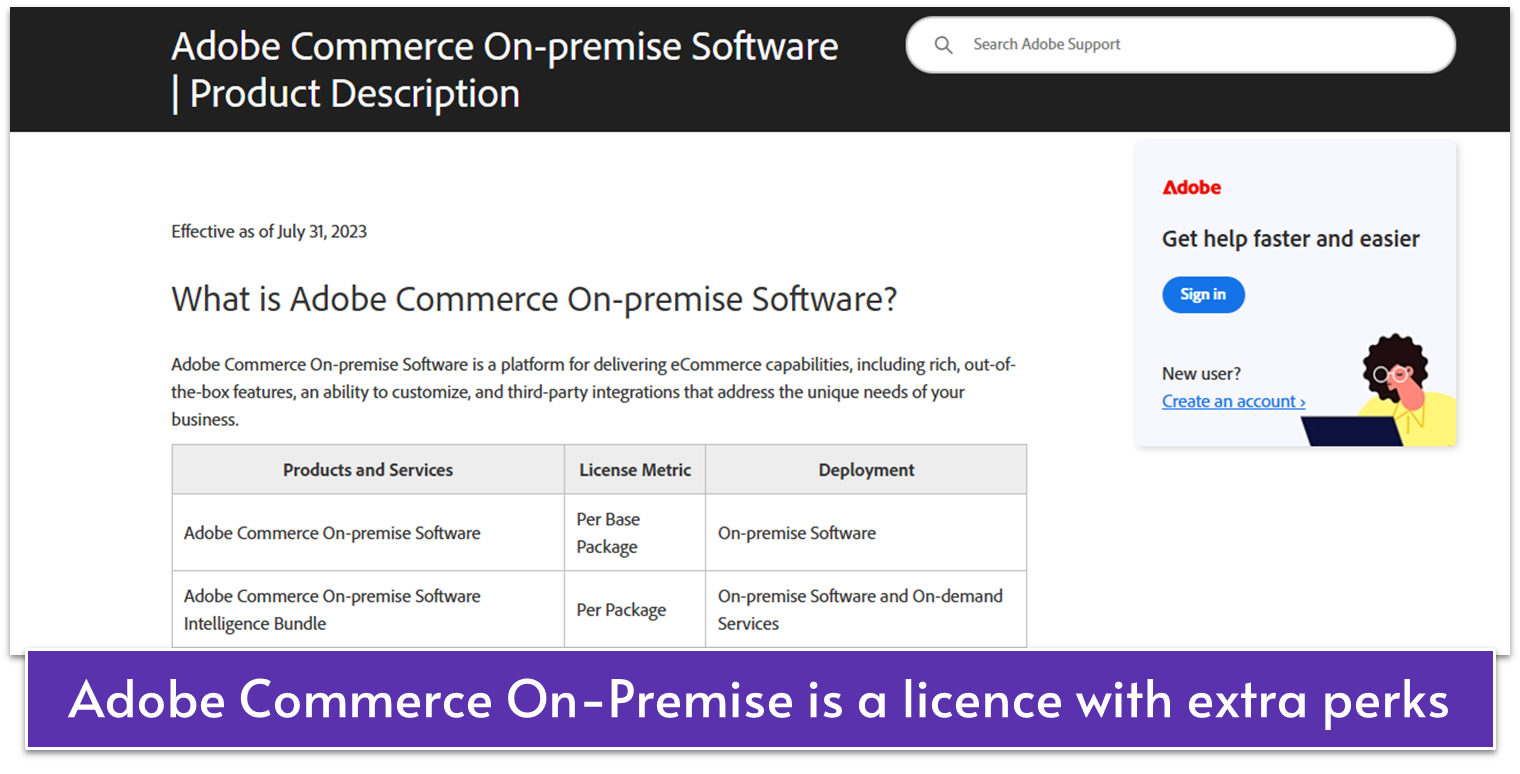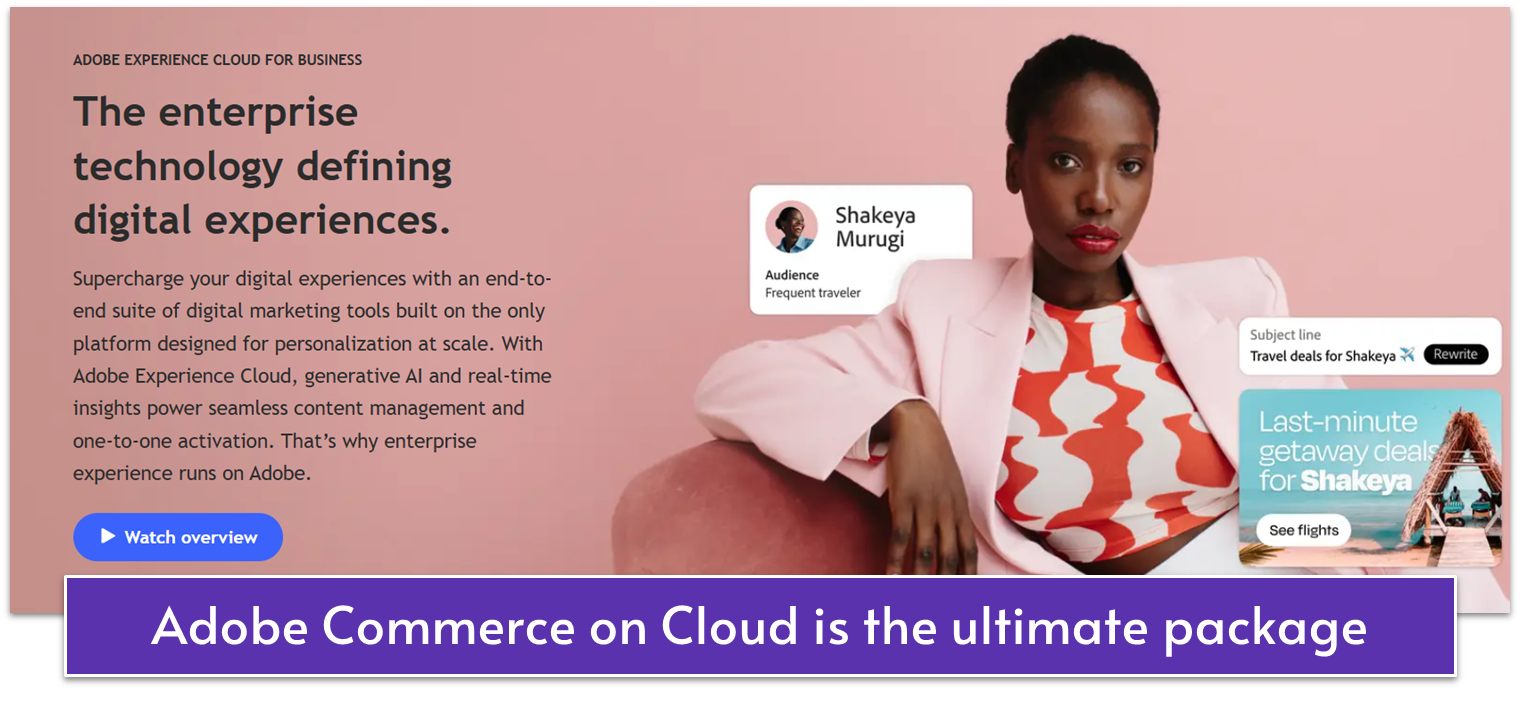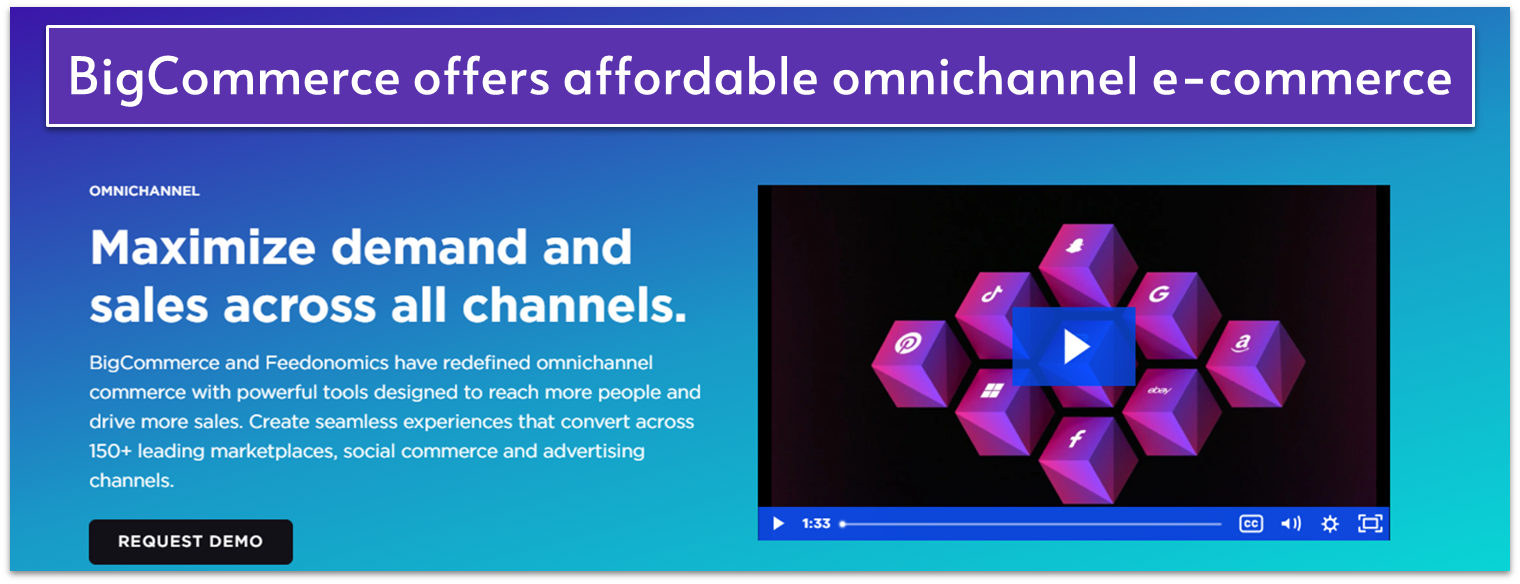Inside this Article
Important Note: Magento is now called Adobe Commerce. Whenever I refer to Magento in this article, the product I’m referring to is the current Adobe Commerce (the enterprise version). The free, bare-bones version is still called Magento Open Source, but I’ll focus on the enterprise version here.
Navigating Adobe Commerce’s offerings can be challenging, especially if you are trying to find the right balance between cost and functionality. You don’t want to overpay for features your business doesn’t need, but you can’t afford to choose a plan lacking essential tools.
Based on my experience testing all three editions and both cloud plans, it’s clear that Adobe Commerce caters primarily to businesses with larger budgets, starting at $22,000/year. It’s not the most affordable option, but it can be worth the investment if you’re looking for enterprise-level features, extensive customization, and scalability.
Unfortunately, Adobe Commerce has no free plan or trial available, so you must commit upfront. However, it’s worth considering cost-effective alternatives like Shopify, which offers a free three-day trial that you can extend up to three months for just a dollar per month. Otherwise, keep reading for my detailed overview of Adobe Commerce (Magento) pricing.
Short on Time? These Are Adobe Commerce’s Best Plans in April 2025
- Magento Open Source (Free) – A low-cost solution if you want to develop your own code or have separate hosting.
- Adobe Commerce On-premise (from $22,000/year) – Access to Adobe Commerce’s B2B features while maintaining full control over management.
- Adobe Commerce on Cloud (from $40,000/year) – Managed services for enterprise-level businesses with global ambitions.
Adobe Commerce Features and Pricing Overview
Extensive Features, Substantial Costs
Adobe Commerce’s pricing is higher than that of many competitors like Shopify and BigCommerce, with annual costs ranging from $22,000–$125,000 for the Adobe Commerce On-premise Edition to $40,000–$190,000 for Adobe Commerce on Cloud. However, the pricing is somewhat justified by its exhaustive feature set, such as B2B functionality, multi-store management, and advanced marketing tools. The pricing structure is tiered and complex. It’s based on a company’s sales volume (gross merchandise value) and average order value (AOV), which is the average amount spent per order on a website or e-commerce store. Adobe Commerce offers different editions, but tier distinctions only apply within Adobe Commerce Cloud, which comes in two options: Commerce Pro and Managed Services. Both plans include cloud hosting and standard reporting tools. Subscriptions are typically annual, with no clear monthly option, so you must make a significant upfront financial commitment. While Adobe Commerce is powerful, I wouldn’t recommend it for smaller businesses or startups due to the high costs and lack of monthly payment options. Plus, you should be aware of potential hidden costs, such as fees for customization, development, and third-party integrations, which can quickly add up depending on the scale of the implementation.Magento Open Source

Adobe Commerce On-premise

Adobe Commerce on Cloud

Adobe Commerce (Magento) Pricing Comparison Table
| Plan | Price | Cloud Hosting | B2B Capabilities | Premium Support & Coaching | Best For |
|---|---|---|---|---|---|
| Magento Open Source | Free | ✘ | ✘ | ✘ | Businesses that need flexibility and a custom store |
| Adobe Commerce On-premise | $22,000/year | ✘ | ✔ | ✘ | Large businesses that still want flexibility |
| Adobe Commerce on Cloud | $40,000/year | ✔ | ✔ | ✔ | Enterprise-level businesses |

Short on time?
Take this one-minute quiz to learn which website builders are best for your project.
Paid-for Extras
Adobe Commerce offers several paid add-ons that you can purchase in addition to your annual plan. While these add-ons provide significant value, especially for larger enterprises, they can substantially increase the overall cost of the platform. Before committing to these additional features, you should carefully assess your specific business needs. Since most have different costs depending on your business size and needs, you’ll need to contact Adobe sales representatives for a direct quote. Here are some of the available add-ons:Third-Party Integrations
Adobe Commerce supports numerous third-party integrations, such as payment gateways, CRM systems, and ERP solutions. The pricing varies based on integration needs, from free to as much as $99,999 (!) for more complex setups. It all ultimately depends on your specific needs, budget, and scope. In contrast, Shopify includes many free, built-in integrations through its App Store. Adobe charges for advanced and custom integrations, which can add up quickly. Shopify also charges for some specialized integrations, such as ERP systems or advanced analytics, but those typically range from $100 to $1,000/month. Again, Shopify outshines Adobe’s offerings as a better overall choice for your budget.Order Management for Adobe Commerce
The Order Management add-on provides a centralized system to manage orders across multiple channels and locations. It offers real-time inventory visibility, intelligent sourcing, and streamlined fulfillment processes so customers can receive their orders promptly and accurately.B2B Module
For businesses catering to other businesses, the B2B Module is indispensable. It introduces features tailored for B2B transactions, such as company account management, custom catalogs and pricing, quick ordering, and advanced payment options. These tools help streamline the purchasing process for business clients.Additional Store Views
Expanding your reach to diverse markets requires localized storefronts. The Additional Store Views add-on allows you to create multiple store views within a single Adobe Commerce instance. This particularly benefits targeting different regions or customer segments with tailored content, languages, and pricing strategies. You can purchase these in packs of 15 if you’re using the Managed Services plan.Adobe Commerce Cancellation & Refund Policy
What to Know Before You Cancel Your Adobe Commerce Subscription
As part of Adobe’s enterprise solutions, Adobe Commerce operates under specific contractual agreements that may differ from standard consumer subscriptions. The cancellation and refund policies for Adobe Commerce are typically outlined in your organization’s contract with Adobe. To cancel your subscription, you need to consult your contract or contact customer support. Terms can vary significantly based on factors such as the duration of the contract and any negotiated clauses. As for Marketplace purchases, including extensions like Advanced SEO or In-Store Pickup, the refund process is very simple. From My Profile, go to Purchase History, then Request a Refund. After you complete the order, you’re all set. Requests must be submitted within 25 days of purchase.Recommended Adobe Commerce Alternatives
Although Magento is a powerful and highly customizable platform, it may not provide the features you need at a price that fits your budget. It’s worth comparing it with some top-rated alternatives to see what other platforms offer in a more affordable range:
| Starting Price | Main Pro | Main Con | ||
|---|---|---|---|---|
| Adobe Commerce (Magento) | $40,000/year | Customizable and scalable for large businesses | Requires technical knowledge and is expensive | |
| Shopify | $29.00/month | Easy to use with plenty of app integrations | Limited customization without coding | |
| Wix | $17.00/month | Affordable and beginner-friendly | Limited features for larger, complex businesses | |
| BigCommerce | $29.00/month | Built-in SEO and multi-channel selling | Limited design flexibility for complex stores |


















